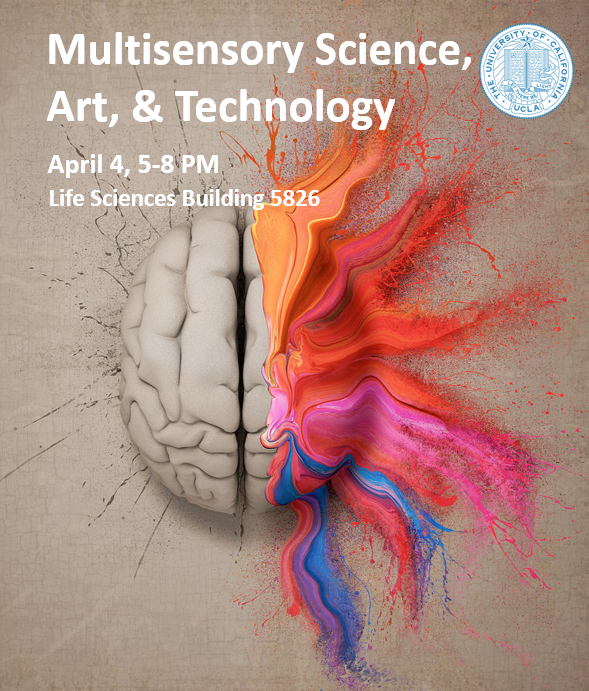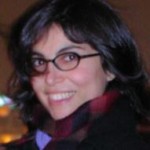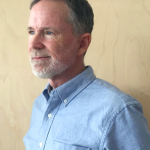
SPEAKER LIST
Multisensory Perceptual Pleasure
Ladan Shams | University of California, Los Angeles
 Perceptual pleasure shapes people’s preferences and influences many decisions humans make on a daily basis, yet it has been studied very little and all studies have focused on stimuli from a single sensory modality, which is inconsistent with most daily life sensory experience that is predominantly multi-sensory. I will present results that suggest the interaction between sensory modalities plays an important role in shaping our preferences, even when the relationship between the senses is not accessible to conscious awareness.
Perceptual pleasure shapes people’s preferences and influences many decisions humans make on a daily basis, yet it has been studied very little and all studies have focused on stimuli from a single sensory modality, which is inconsistent with most daily life sensory experience that is predominantly multi-sensory. I will present results that suggest the interaction between sensory modalities plays an important role in shaping our preferences, even when the relationship between the senses is not accessible to conscious awareness.
Space in the Mind of a Machine
Refik Anadol | University of California, Los Angeles
 Embedding media arts into architecture with machine intelligence, Refik Anadol questions the possibility of a post digital architectural future in which there are no more non-digital realities.
Embedding media arts into architecture with machine intelligence, Refik Anadol questions the possibility of a post digital architectural future in which there are no more non-digital realities.
His body of work locates creativity at the intersection of humans and machines. In taking the data that flows around us as his primary material and the neural network of a computerized mind as his collaborator, Anadol paints with a thinking brush, offering us radical visualizations of our digitized memories and expanding the possibilities of architecture, narrative, and the body in motion. Anadol’s site-specific parametric data sculptures, live audio/visual performances, and immersive installations take many forms, while offering a dramatic rethinking of the physical world, our relationship to time and space, and the creative potential of machines.
How the Senses Shape Art Perception
Carmel A. Levitan & Aleksandra Sherman | Occidental College


What factors shape art perception and appreciation? We will present a series of data suggesting that preferences are interactively shaped by the formal features of the artwork itself, by individual differences in perceptual and cognitive capacities, and by the multi-sensory environment. We begin by presenting evidence that the objects one associates with a color, odor, or artwork predict their overall preferences, such that preferences for a stimulus’ component parts or associations are correlated with a more global preference for the whole stimulus; this may be an underlying amodal tendency of object association. Interestingly, using individualized associations and preferences to objects generated by the entire group best predicts preferences, suggesting that individual differences and sociocultural experiences with specific objects shape our art experiences. Individual’s emotion-based associations also seem to play a role; cross-modal correspondences between olfaction and music seem to be partly mediated by the specific emotions elicited by each stimulus. Consistent with the notion that individual differences play a strong role in shaping preference, we also show evidence that individual differences in working memory shape visual art preferences, such that individuals with higher visual working memory prefer artworks with greater visual complexity than individuals with lower visual working memory; we are currently expanding this to music to see if auditory capacities shape music preferences in a similar way. Next, we examine how perceptual capacities and multisensory information shape art perception in a more naturalistic setting, a museum exhibition. Finally, we suggest that to truly understand art perception, we will need to move toward investigating non-preference based outcomes of art such as more longitudinal social and epistemic functions.
Darkgame: Sensory Enhancement and Deprivation as Computer Game Experience
Eddo Stern | University of California, Los Angeles

Eddo Stern will discuss examples of multi sensory experience in games and present his Darkgame project, a computer game built around the concept of immersion through sensory isolation and deprivation which is designed with gameplay for all players including those who are visually and aurally impaired.
Designing Proactive Health – Towards Engaging Multisensory Interventions
Pablo Paredes | Stanford University
 As technology becomes ubiquitous, new opportunities arise to tackle hard problems, such as keeping people healthy, as opposed to just curing disease. The motivation and values of healthy people are less understood, and introducing interventions to keep people engaged is a challenge that requires looking beyond just efficacious design.
As technology becomes ubiquitous, new opportunities arise to tackle hard problems, such as keeping people healthy, as opposed to just curing disease. The motivation and values of healthy people are less understood, and introducing interventions to keep people engaged is a challenge that requires looking beyond just efficacious design.
Towards a Really Sensational Architecture
Wes Jones | University of Southern California
 This discussion suggests a logical framework for environmental or architectural design that is responsive to the effects and uses of sensation. This framework understands a traditional primary bias in design towards sight, reflecting the primary interest of design in the production of meaning/meaningful effects, but proposes to render “visible” the heretofore hidden contributions of the other senses to the judgement of that meaning and the “authenticity” of those effects. Examples are given of multimodal sensory judgements in architectural history and contemporary practice, as well as a demonstration of the ideas in action in at the location of the Multisensory Science, Art, and Technology symposium.
This discussion suggests a logical framework for environmental or architectural design that is responsive to the effects and uses of sensation. This framework understands a traditional primary bias in design towards sight, reflecting the primary interest of design in the production of meaning/meaningful effects, but proposes to render “visible” the heretofore hidden contributions of the other senses to the judgement of that meaning and the “authenticity” of those effects. Examples are given of multimodal sensory judgements in architectural history and contemporary practice, as well as a demonstration of the ideas in action in at the location of the Multisensory Science, Art, and Technology symposium.
Panel Discussion
Ari Peralta | Arigami LTD

Participants: Ari Peralta, Ladan Shams, Refik Anadol, Carmel Levitan, Aleksandra Sherman, Eddo Stern, Pablo Paredes, Wes Jones.
EVENT INFO
April 4, 5-8 pm | Life Science Building 5826, UCLA
“Location may be subject to change”
R S V P
There is No Fee for attending the symposium, but those who are interested may RSVP with via email: multisensorysymposium@gmail.com
